New Acquisition: c. 1830s Corset
Earlier this year, The Underpinnings Museum ran its first major fundraiser since 2016’s Kickstarter (the crowdfunding campaign that helped us to launch this website). We took to social media to ask our followers to donate towards an incredibly rare garment: an early, c. 1830s corset.
The campaign was a runaway success, and in a single week we raised over $1000 to add this incredible piece of history to our collection! A huge thank you to every person who helped, be it through donating or sharing the campaign on social media; it’s your support that makes this entire project possible, and allows us to keep growing.
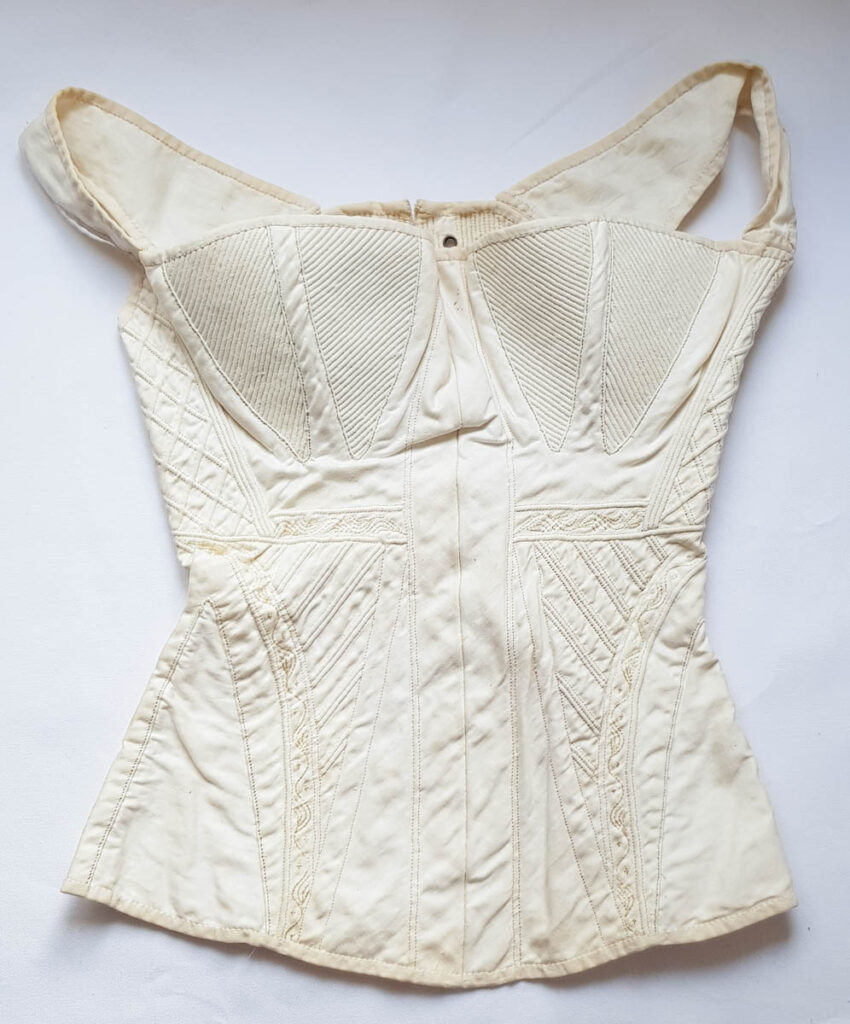
Although it will be some time before we’ve raised the funds for another photoshoot, we thought we’d share some ‘preview’ photos of this incredible garment for your enjoyment. Although the photography isn’t up to our usual calibre, you can still appreciate some of the incredible details!
The corset is completely hand sewn, with the most exquisitely tiny stitches. Unlike corsets from the mid-19th century onwards, and the earlier stays of the 18th century, this corset relies purely on cording to support and shape the body. The garment would have originally had a single bone to offer structure: a wide busk at the centre front, which has now been removed. The garment needs closer study to verify, but it appears as though this centre front channel has been cut upon and carefully repaired at some point in its life.
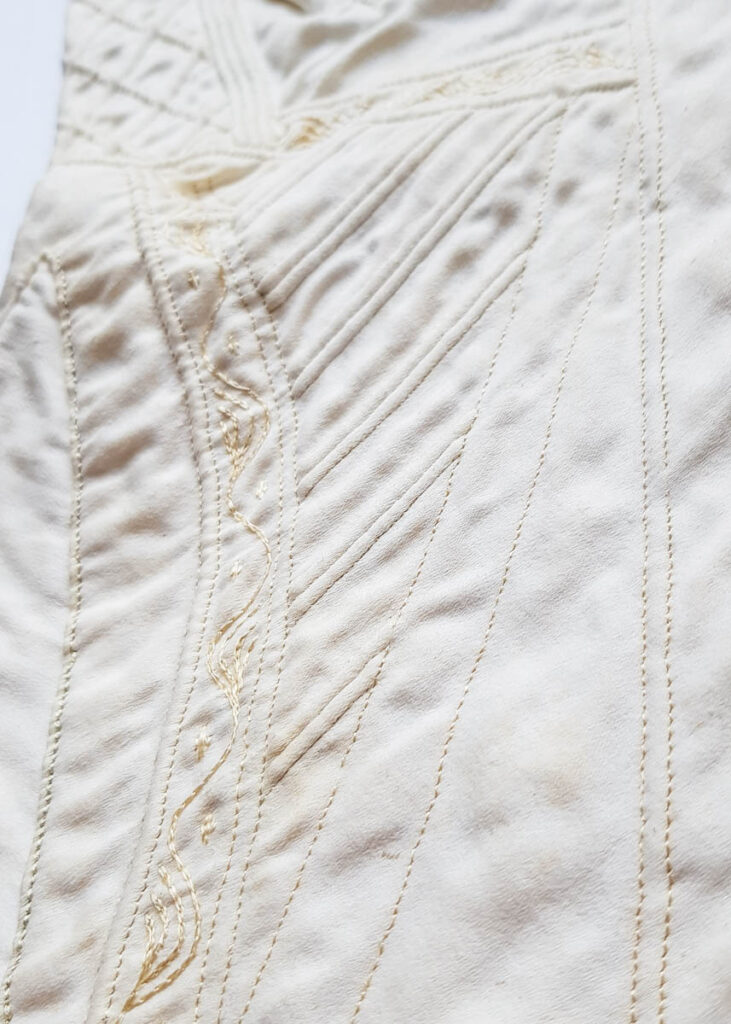
c. 1830s corset – The Underpinnings Museum 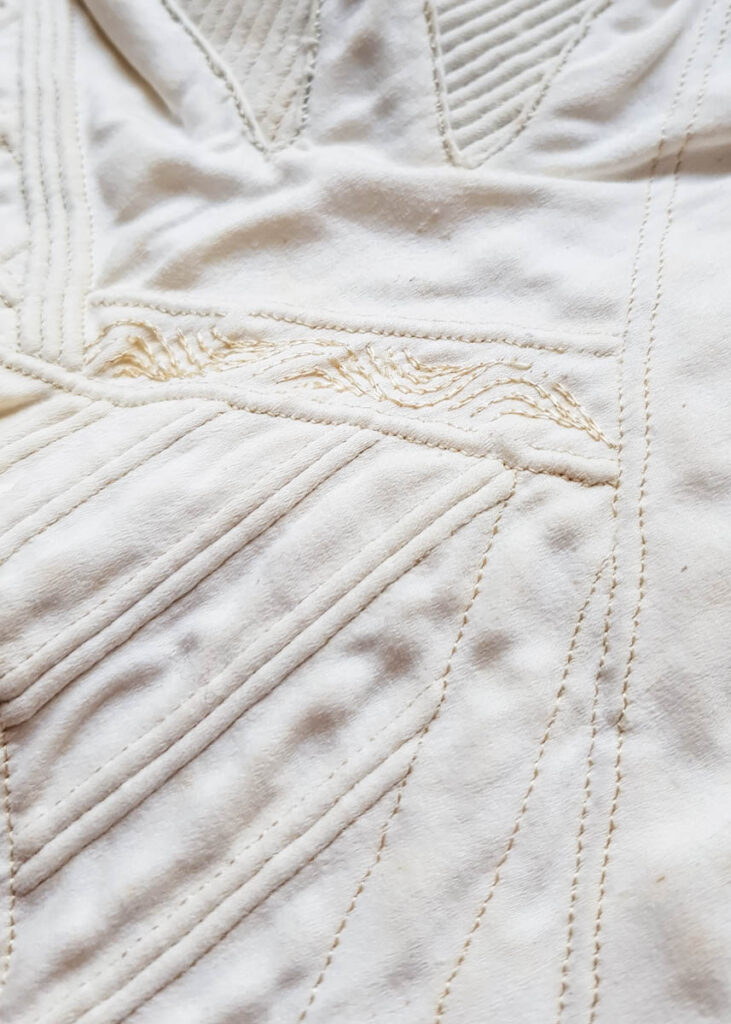
c. 1830s corset – The Underpinnings Museum 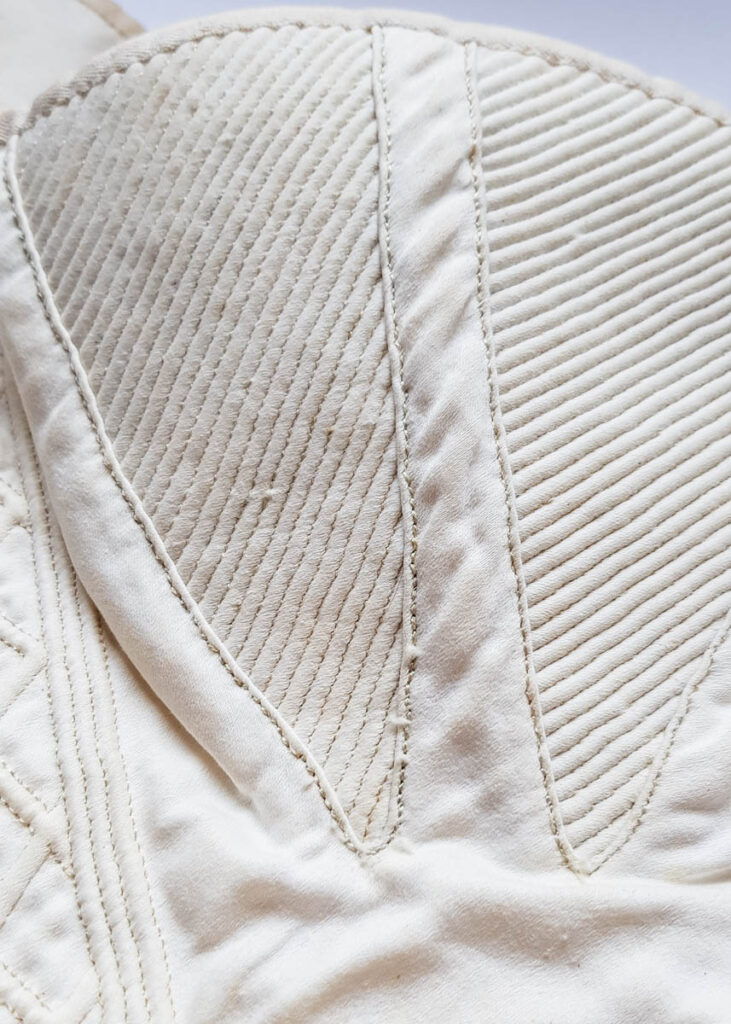
c. 1830s corset – The Underpinnings Museum 
c. 1830s corset – The Underpinnings Museum 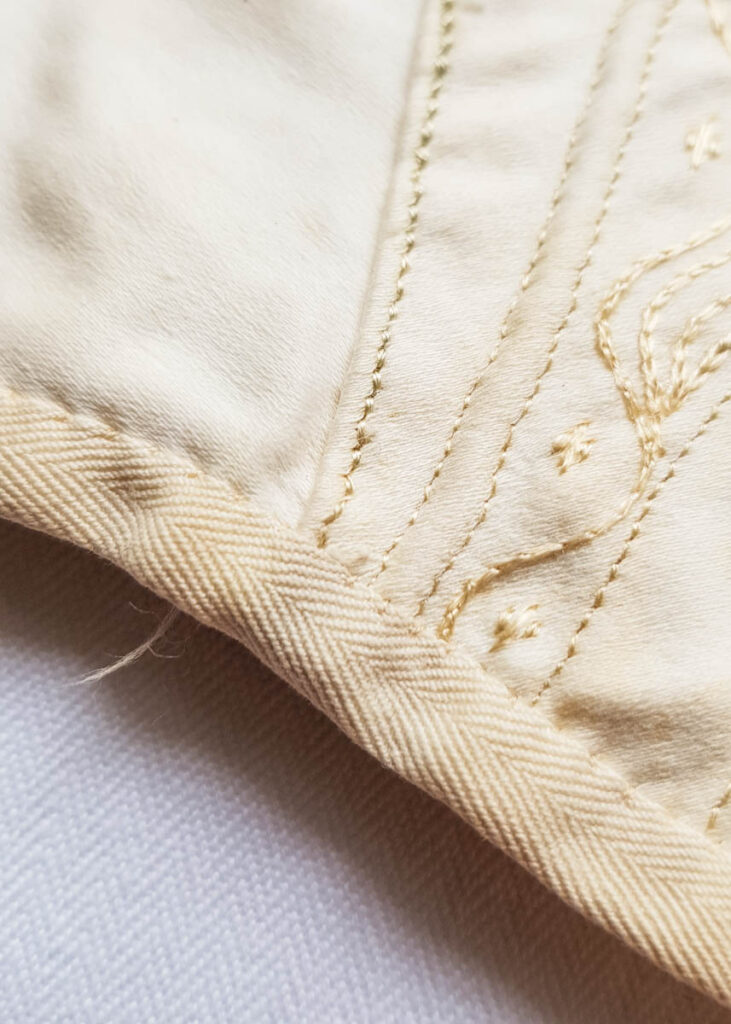
c. 1830s corset – The Underpinnings Museum 
c. 1830s corset – The Underpinnings Museum 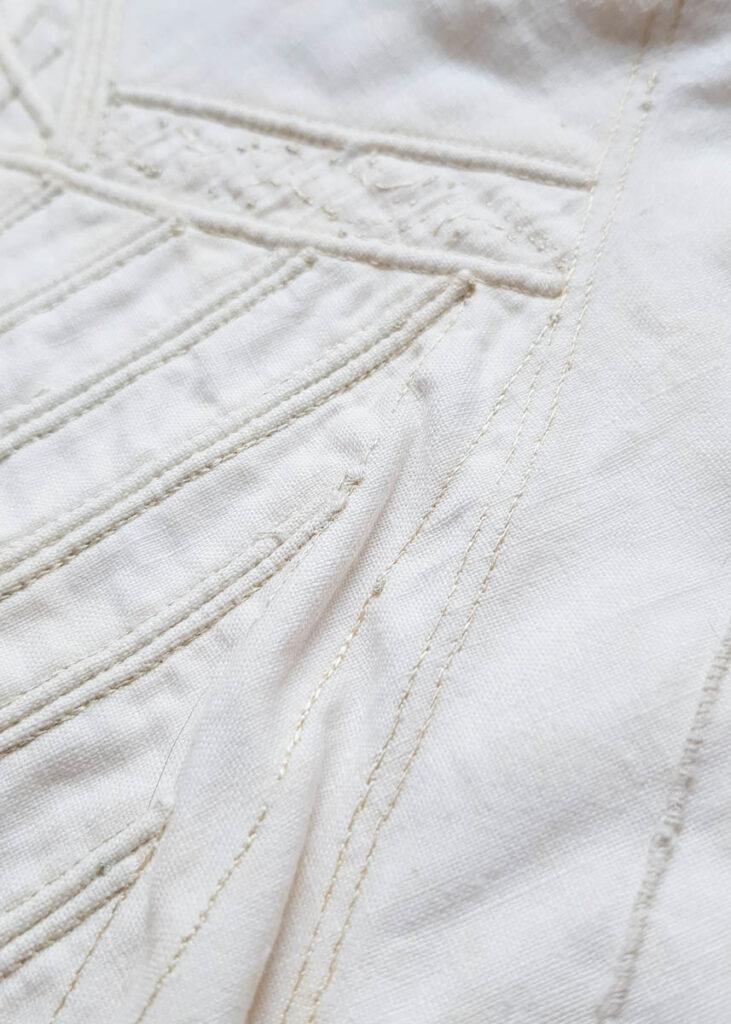
c. 1830s corset – The Underpinnings Museum 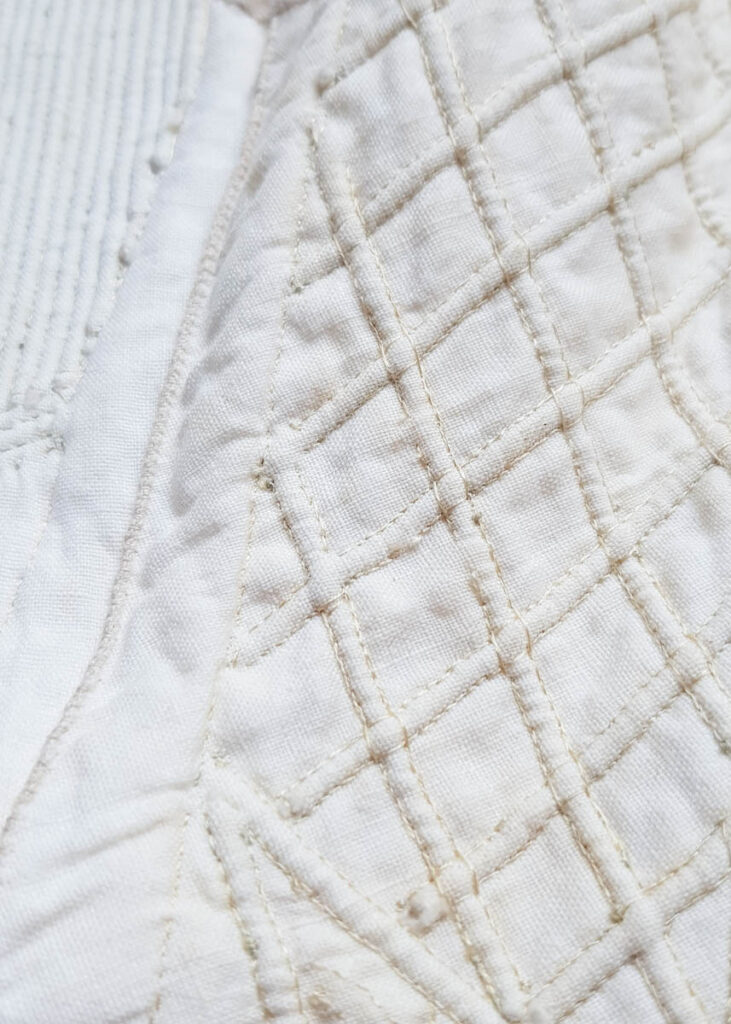
c. 1830s corset – The Underpinnings Museum 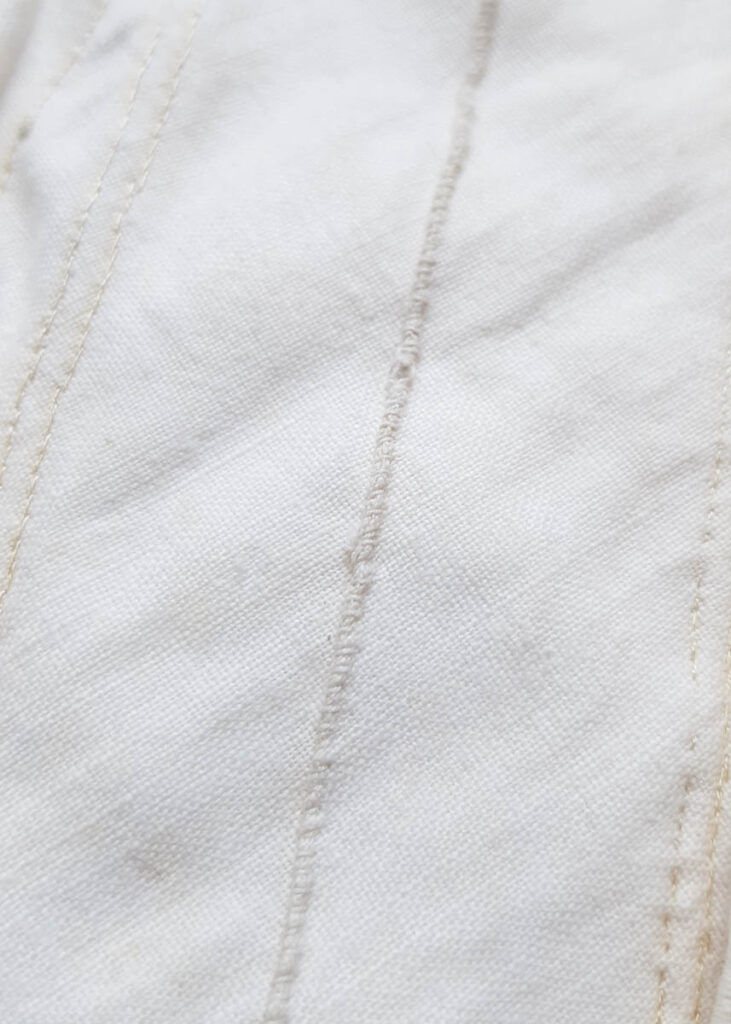
c. 1830s corset – The Underpinnings Museum
The corset would have originally fastened with lacing through the eyelets at the centre back of the garment. It is noteworthy that these eyelets are made of metal. Metal eyelet technology is believed to have been invented in the late 1830s, dating this garment as either late 1830s-1840s. It is also possible, however, that the garment was made earlier with hand stitched eyelets, and that these were re-enforced at a later date with the sturdier metal style.
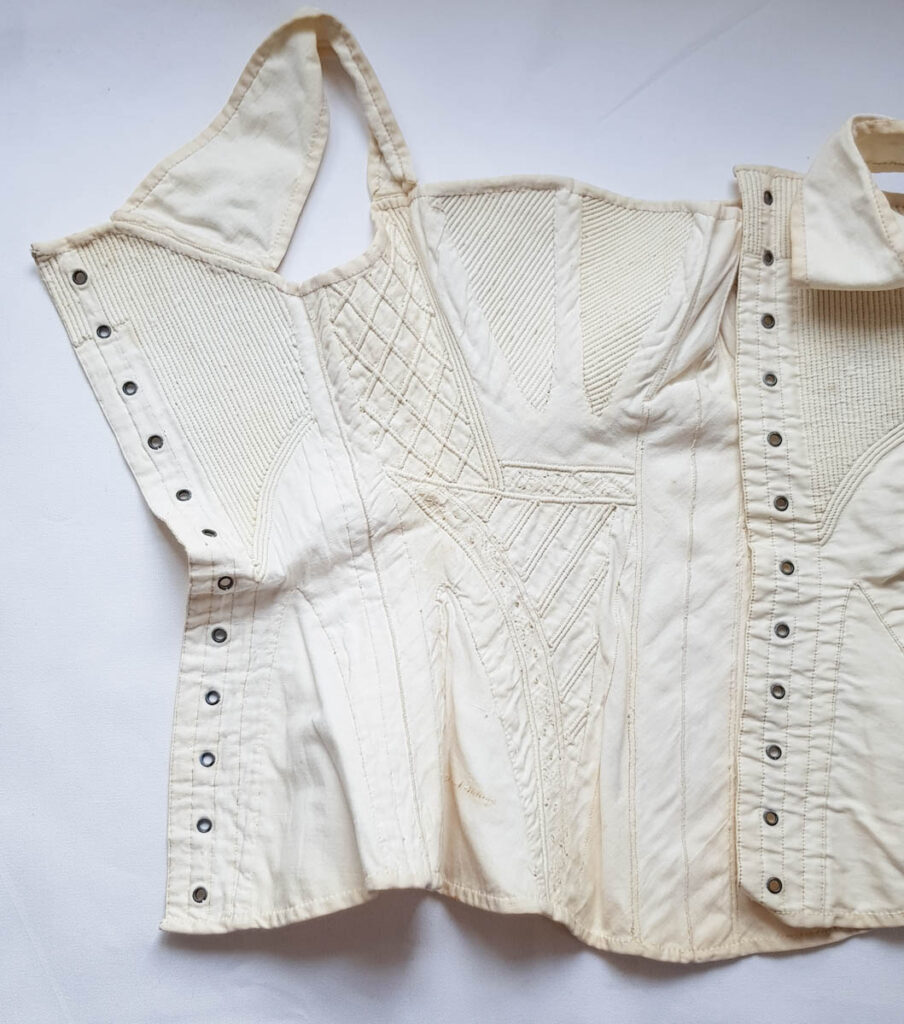
Decorative and functional embroidery is used throughout the corset, with dense cording at the bust gores offering particularly effective lift and shaping.
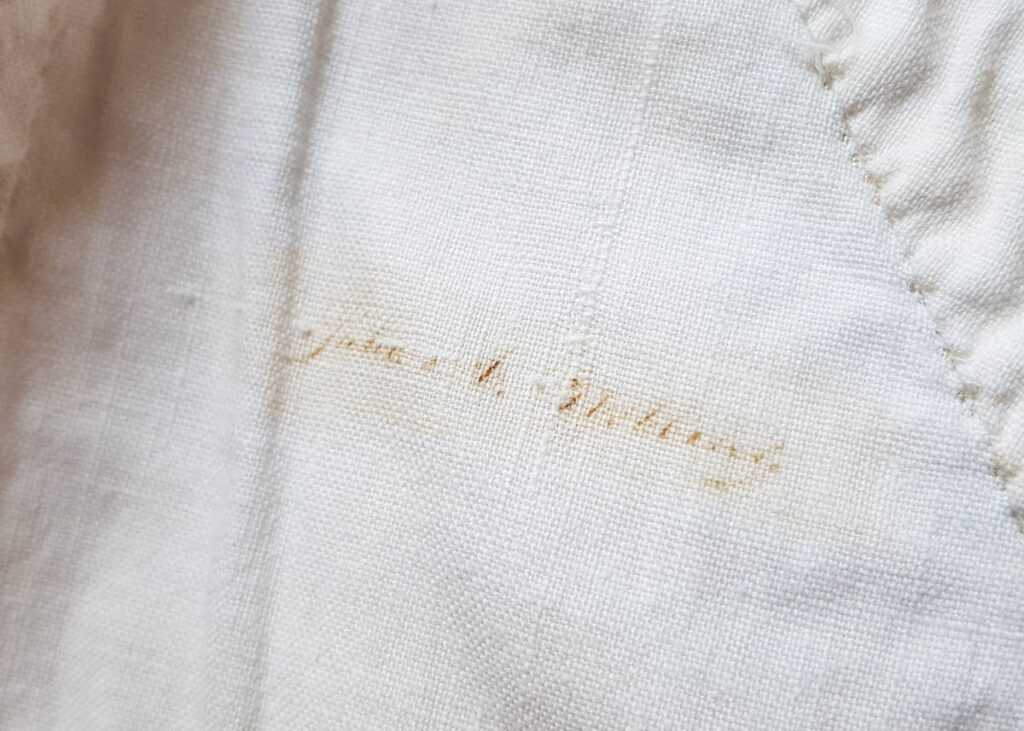
The interior of the corset reveals a name stamp, presumably that of the original owner. Although it has mostly faded due to the passage of time, The Underpinnings Museum’s team has deciphered it as ‘Julia A. Hobbing’. If any of our readers can see another name or knows something about this individual, we would love to hear from you!
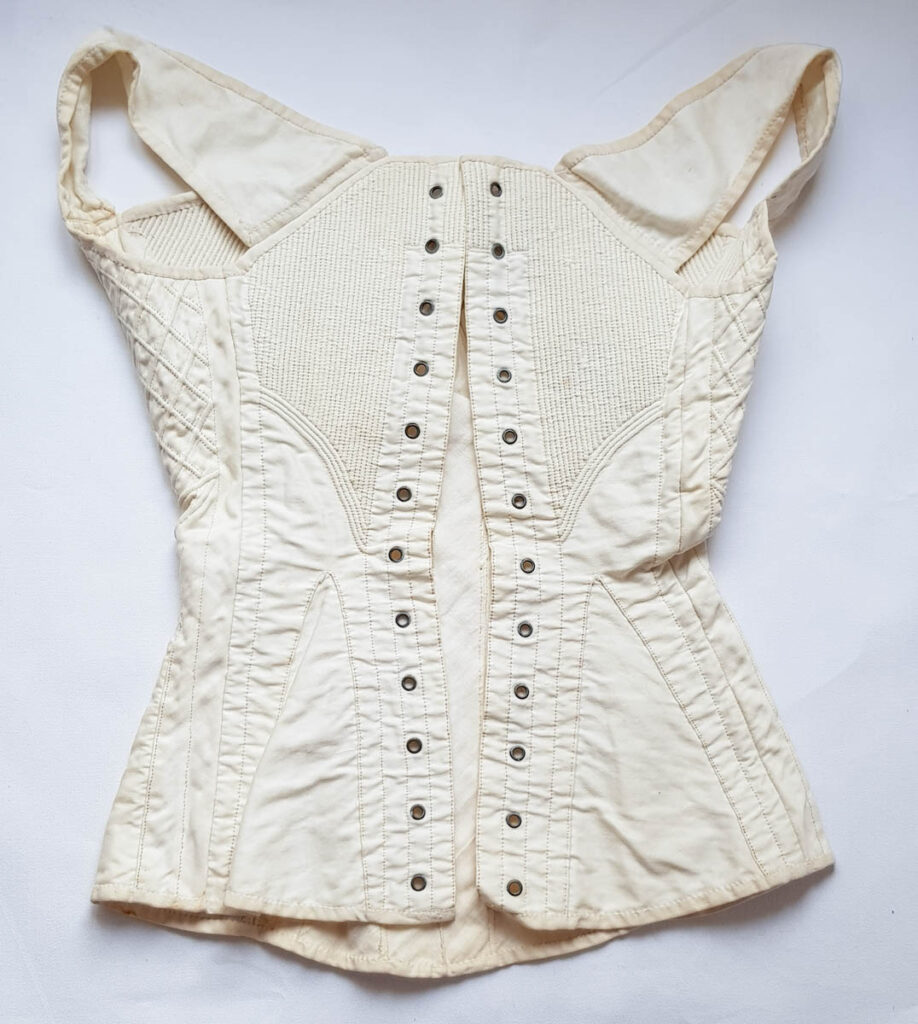
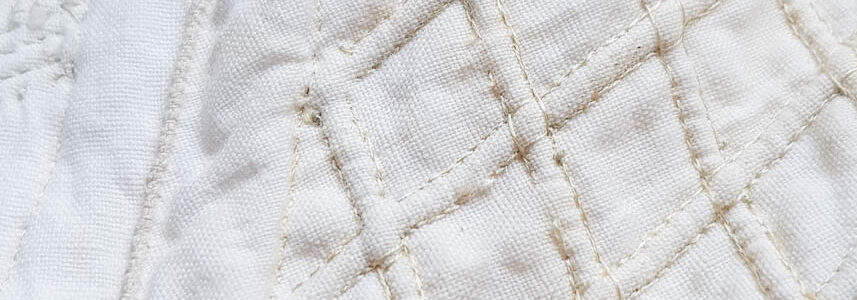
1 Comment
Join the discussion and tell us your opinion.
Oh this is stunning! Can’t wait for the final photos and info to be put together.